#Paramecium Caudatum
Text
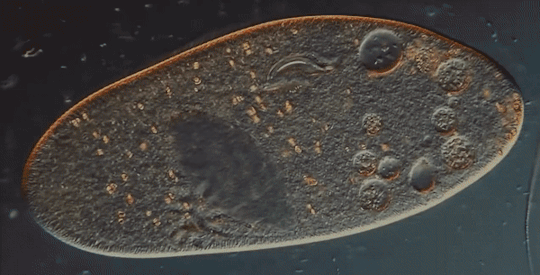
Paramecium Caudatum showing nucleus, organelles, contractile vacuole complex, food vacuoles & oral groove
#nature#photography#science#education#adorable#explore#funny#Paramecium Caudatum#protozoa#cell#unicellular#nucleus#organelles#vacuoles#animal cell#gif#gifs#biology#awesome#beautiful#beauty
30 notes
·
View notes
Text
0 notes
Text
Ultrafiltration rates along with intradialytic hypotension: A case-control trying regarding grouped haemodialysis information.
The relationship involving diet intake of magnesium mineral and Wie threat has been explored inside several significant possible cohort studies (the actual U73122 Nurses' Wellness Examine, the Pros Follow-up Research, the Cancer Reduction Review The second Eating routine Cohort, the actual Multiethnic Cohort Review, along with the Country wide Institutions involving Health-AARP Diet along with Health Examine), comprising above One,050,000 females and males adding 1093 instances of ALS during a indicate involving Fifteen years associated with follow-up. Cox proportionate problems versions were used within just every cohort, as well as cohort-specific quotations were consequently grouped using a random-effects design. Outcomes revealed that nutritional magnesium mineral consumption had not been linked to ALS danger, relative danger One.'07, 95% self confidence period of time 3.88-1.31 researching the highest quintile of absorption using the least expensive. This particular locating will not assist a protective aftereffect of magnesium absorption in ALS threat. Further studies ought to investigate the mineral magnesium absorption in combination with rock publicity as well as genetic alternatives impacting magnesium absorption.Within this function, many of us directory your activity as well as non-linear visual reports regarding PMMA polymer bonded films deposited about Cuando(111) wafers using the spin-coating strategy. The particular transportation features have been tested employing a four-probe method. The excitation was supplied by Ten ns impulses regarding lambda=1.32 mu mirielle YAG: Nd laser. The particular photoinduced laser mild had been polarized with a rotating Fresnel polarizer, along with the result lighting forces have been detected by using a rapidly response photomultiplier. From reduced currents, the photoinduced addiction of eye constants does not show an important adjust with regards to the photoinduced electrical power. The result is out there merely on the nano-interfaces happening around the edges. Radical alterations tend to be observed only at greater power (concerning 6 Versus), which in turn correlates using a radical improve of the present. The sunday paper procedure explaining minimal dc-elecric area for the entangling current simply by tunneling is actually suggested. (C) 2014 Elsevier N.Sixth is v. Almost all protection under the law reserved.We all recognized an urgent small-sized Genetic fragment during polymerase squence of events (PCR) investigation heterogeneity of your macronuclear intergenic region associated with Paramecium caudatum. Southeast blotting of complete genomic DNA using the PCR product or service as being a probe revealed that the small-sized Genetic make-up fragment constituted part of the macronuclear genome. Sequencing said your PCR product or service was a chimeric Genetic framework which may be generated simply by tail-to-tail mix from the 5' place with the hemoglobin (hb) gene to the majority with the nucleosome assembly protein-1 (nap-1) gene. Quick combination repeat made up of tetra-and tri-nucleotides can be found in the putative bosom sites within the hb and nap-1 body's genes, respectively. This feature differs from these found at the bounds of TA-internal taken away sequences inside the R. aurelia complex and also at transposable components within other types.
#Anti-diabetic Compound Library#MAPK inhibitor#PI3K inhibitor#SW033291#Idarubicin#U73122#Bisindolylmaleimide I#AMG510#INCB018424#PD-0332991#AZD9291#PLX4032#CB-839#VX-765#CP-456773#PD0325901#STI571#Bucladesine#C59#BAY 73-4506
0 notes
Link
Paramecium यह एककोशिकीय सिलिअटेड प्रोटोजोआ का एक जीनस है, जो चप्पल के आकार के जैसे दीखते हैं और वह मीठे पानी, समुद्री और खारे पानी में पाए जाते हैं।
दुनिया भर में इसकी 9-10 प्रजातियां हैं और इन प्रजातिओं में से Paramecium Aurelia और Paramecium Caudatum यह दो आम प्रजातिया है।
Paramoecium की खोज एक महान वैज्ञानिक Antonie van Leeuwenhoek(एंटोनी वैन लीउवेनहोक) ने सन 1678 इसवी में की थी।
तो इस पोस्ट में हम पैरामीशियम के बारे में और जानकारी जानेंगे जैसे की पैरामीशियम क्या है?, पैरामीशियम का चित्र कैसा है?, paramoecium diagram, पैरामीशियम में प्रजनन कैसे होता है?, paramecium characteristics इत्यादी।
#Paramoecium In Hindi#पैरामीशियम क्या है?#पैरामीशियम कहां पाया जाता है?#paramoecium diagram#paramecium characteristics#paramecium reproduction#ancientanimals#Paramecium Aurelia#Paramecium Caudatum#amazing facts history
0 notes
Text
KONVID-19 È QUA

Dopo tanti annunci lo strumento di calcolo di rischio contagio Sars-Cov2 è arrivato sui vostri teleschermi ma prima che clicchiate sul link sottostante... DAVVERO CREDEVATE CHE NON VI AVREI CONFEZIONATO UN PIPPONE?!
Il programma di calcolo porta il mio nome ma è frutto di un sanguinoso lavoro di gruppo - nel senso che siamo riusciti a picchiarci con ferocia su ogni singolo passaggio - che è cominciato ad Agosto (quando il coronavirus quasi sembrava un ricordo) ed è culminato con questo rilascio.
Il mio affetto va a @herr-papero e @gigiopix, completamente inadatti a capire alcunché di medicina come altrettanto (se non più) io di informatica e matematica. Mettersi d’accordo è stato peggio di quella volta che un chihuahua mi ha azzannato i coglioni e poi s’è messo a roteare senza mollarli. @heresiae, però, li ha minacciati virtualmente con l’ascia che le ho regalato ed equilibrio è stato raggiunto. Grazie anche a @firewalker, @spaam e @thec8h10n4o2 che credevo fossero dalla mia parte a dar contro a quegli stitici rabbiosi a 8 bit e invece mi hanno sommerso di dati che mi avrebbero fatto preferire avere il funzionamento biologico di un Paramecium caudatum. E infine le mie scuse profuse ai pazienti tester (tra cui @surfer-osa, @masuoka, @frauigelandtheboys, @lamagabaol @nusta @obscureobject @seiseiseitan @salfadog ) per averci permesso di individuare bachi e sbavature.
Un ultima cosa e poi giuro basta...
Questo strumento NON FA PREVISIONI MEDICO-DIAGNOSTICHE ma serve solo a far capire con una semplificazione visiva quali sono i comportamenti più rischiosi di altri e i metodi più efficaci per evitare di farvi coronare da questo virus del cazzo.
Eccovi il link , con allegate la mia promessa solenne che mai in futuro sentirete dire «Il sistema andò online il 9 Novembre 2020. Konvid-19 cominciò a imparare a ritmo esponenziale. Divenne autocosciente alle 2:14 del mattino, ora dell'Atlantico, del 29 Novembre.»
konvid.epizy.com
Le nostre orecchie sono aperte a ogni critica e il mio petto a ogni freccia.
Grazie per ogni eventuale gentile reblog e per lo spam del tool su ogni social network.
<3
457 notes
·
View notes
Text



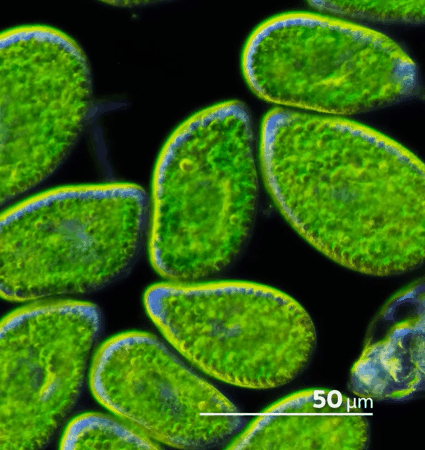

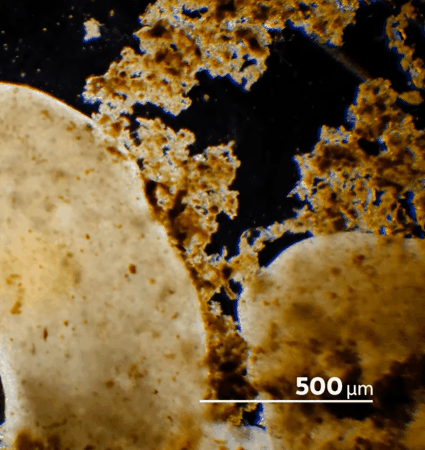
"When a microbes is traveling down but not swimming, it is sedimenting. Scientists measure the sedimentation rate of microbes by immobilizing them and watching them fall through water. Using that method, they've found that the sedimentation rate of Paramecium tetraurelia is about 67.4 micrometers per second, and the sedimentation rate for Paramecium caudatum was about 123 micrometers per second. So that gives you a baseline for some ciliates."
Journey to the Microcosmos- Bursaria: Giant Gravity-Sensing Vacuums
Images Originally Captured by Jam's Germs
#journey to the microcosmos#Bursaria Giant Gravity-Sensing Vacuums#science#scienceblr#biology#bioblr#microbiology#microbes#microoganisms#bursaria#stentor#paramecium bursaria#pelomyxa#science aesthetic
43 notes
·
View notes
Video
youtube
顕微鏡で見える世界
0:08- ゾウリムシ(Paramecium caudatum)
0:27- ミバエ(Fruit Fly)
0:36- ミドリムシ(Euglena)
0:45- 肉に生えたカビ(Meat Mold)
1:01- 赤血球(Red Blood Cells)
1:17- 端脚類の循環(Amphipod Circulation)
1:24- 細菌(Bacteria)
1:34- オオミジンコ(Daphnia magna)
1:44- ヒドラがミジンコを捕らえたところ(Hydra Ensnaring Daphnia)
1:53- ヒドラ(Hydra)
2:01- ヒト精子(Human Sperm)
2:11- プラナリア(Planarian Worm)
2:22- アオミドロ(Spirogyra)
2:44- パン酵母(Baker’s Yeast)
2:52- 貝虫(Ostracods)
3:01- ヒト骨(Human Bone)
3:09- 旋毛虫の分裂(Ciliate Dividing)
3:17- 緩歩動物(Tardigrade)
3:25- コケの胞子体(Moss Sporophyte Capsule)
3:35- ゴキブリ触覚(Hissing Cockroach Antenna)
3:44- ミドリムシと赤血球(Euglena & Red Blood Cells)
3:54- クラミドモナス(Chlamydomonas reinhardtii)
4:14- 大腸菌と赤血球(E.coli & Red Blood Cells)
The Amazing Microscopic World
2 notes
·
View notes
Text
Ecology
Ecology is the study of how organisms interact with each other, and their environment.
Population- A group of individuals of a single species living in 1 area who can interbreed and interact with each other
Community- All of the organisms living in one area
Ecosystem- All of the organisms and the abiotic factors with which they interact
Abiotic factors- Nonliving factors like temperature, weather, water, wind, rocks, and soil.
Biotic factors- The organisms with which an organism might react, like birds, insects, predators, and prey
Biosphere- The global ecosystem
Niche- What an organism eats, and needs to survive
Properties of Populations
Properties are defined by size, density, and dispersion.
Size
The total number of organisms in a population. Births, deaths, immigration, and emigration limit the size of the population.
Density
The number of individuals per unit area or volume. Density is an extremely hard property to calculate, so ecological scientists use sampling techniques and estimate the number of organisms living in an area. Marking and recapture is an example of one of these techniques.
Dispersion
Dispersion is the pattern of which individuals are spaced within the area. Clumped is the most common pattern of dispersion, for example, fish swim in schools. Some organisms, like specific plants, live in a uniform pattern. These plants secrete toxins that keep other plants within a certain distance from them. Random spacing happens when there are no attractions or repulsions.

Population Growth
All populations have biotic potential. The biotic potential is the maximum rate at which a population could increase given ideal conditions. Some factors that influence biotic potential are:
Age when reproduction begins
Life span during which the organism is able to reproduce
Number of reproductive periods
Number of offspring an organism can have at 1 time
Some characteristics of growth are common with all organisms. Growth begins slow, then it explodes in a period known as exponential growth. Once the organisms reach carrying capacity, they will either become stable, rising and falling consistently or enter a death phase, where their population will crash. This may be caused by competition, waste, or predation, for example.
Fun fact: The human population has been in its exponential growth phase for 300 years.

The carrying capacity (K) is the limit to the number of individuals who can occupy an area at one time. Carrying capacity does not stay the same. It changes as environmental conditions change.

Reproductive Strategies
Organisms who are opportunistic, and reproduce rapidly when the environment is uncrowded and resources are plentiful are called r-strategists. Rodents are r-strategists.
K-strategists, however, do what they can to maximise their population size near the carrying capacity for the environment. Elephants and monkeys are K-strategists.
r-strategists have many small young, while K-strategists have few, large young
r-strategists provide little to no parenting, while K-strategists provide intensive parenting.
r-strategists mature rapidly, while K-strategists mature slowly
r-strategists reproduce once, while K-strategists reproduce many times.
Limiting Factors
Limiting factors limit population growth. There are two kinds:
Density-dependent factors: These are factors like competition for food, the buildup of waste, predation, and disease, that increase as the population increases
Density-independent factors: These are factors whose occurrence have nothing to do with the population size, such as earthquakes, storms, and volcanic eruptions.
The Hare and Lynx Study
The Hare and Lynx study is a very famous study on population growth. It follows the population of snowshoe hares and lynx at the Hudson Bay Company from 1850 to 1930 and shows connected fluctuations between the two animals populations.
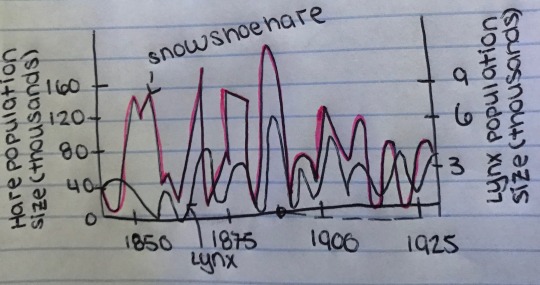
The Lynx’s cycle is caused by cyclical fluctuations in the hare’s population while the hare’s cycle is likely caused by the presence of resources
Community Structure and Population Interactions
There are 5 main categories of interaction: competition, predation, parasitism, mutualism, and commensalism.
Competition
G.F. Gause developed the competitive exclusion principle after he studied the effects of competition within a lab.
Gause studied the species Paramecium caudatum and Paramecium aurelia. When cultured separately, they both grew rapidly and levelled off at carrying capacity. When the cultures grew together. P.aurelia drove the other species to extinction. His conclusion was that: Two species cannot coexist if they share the same niche.
If two organisms share a niche in the same area, either 1 organism will be driven to extinction, or it will adapt to exploit different resources. This is known as resource partitioning.
Something similar to resource partitioning happened with the Galapagos finches. As they were isolated, adaptive radiation occurred, changing the shapes of their beaks so that they could exploit the most available resources. This divergence in adaptation is called character displacement
Predation
Predation either occurs when an animal eats another, or an animal eats a plant. Animals and plants have evolved defences like poison, and camouflage to avoid predation. Passive defences are characteristics like cryptic colouration and do not expend energy, while active defences, like fleeing or hiding, expend energy.
Aposematic colouration- Bright colouring found on poisonous animals warning predators to stay away
Batesian mimicry- When a harmless animal mimics the colouration of a poisonous one, such as the viceroy butterfly who looks similar to the monarch butterfly
Mullerian mimicry- When two or more poisonous species resemble each other to gain safety in numbers.
Feeding
Herbivores eat plants, carnivores eat meat, and detritivores are also known as scavengers. They are organisms like hyenas and vultures, who feed on the dead organic matter known as detritus
Mutualism
This is a symbiotic relationship where both participants benefit, such as bacteria in the human gut microbiome. The bacteria live in the intestine and produce vitamins that the host needs.
Commensalism
This is a symbiotic relationship where one organism benefits and one is neither helped nor harmed, for example, barnacles live on whales, giving them access to food. The whale is unbothered by their presence.
Parasitism
This is a symbiotic relationship where one organism benefits and one is harmed. Mosquitoes drink other animals blood. They get food, while the organism loses blood and an annoying allergic reaction that drives people crazy.
The Food Chain
The food chain is the pathway that energy is transferred from one trophic or feeding level to another. Only 10% of the energy from one trophic level is usable for the trophic level above it. So if at the beginning of the food chain, there is 1000g of plant matter (producers) the food chain can support 100g of primary consumers (herbivores) 10g of secondary consumers (carnivores) and 1g or tertiary consumers (carnivores)
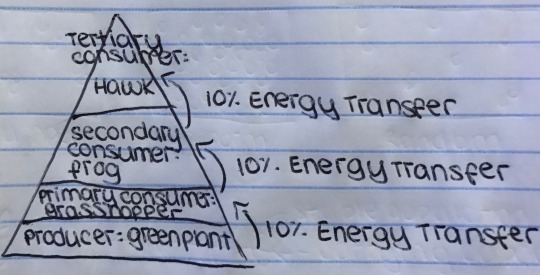
In an environment, food chains link together to form complex food webs. Animals can occupy different trophic levels as a result. For example, when a person eats vegetables, they are a primary consumer, but when they eat steak, they are a tertiary consumer.
Producers
Producers are able to convert light energy into chemical bond energy. They have the greatest biomass of the trophic levels. They include plants, diatoms, and phytoplankton. Diatoms are photosynthetic algae that live in the ocean. Phytoplankton and diatoms make up the majority of producers in marine and freshwater ecosystems.
Primary Consumers
Primary consumers eat producers, and are herbivores, for example, grasshoppers and zooplankton
Secondary Consumers
Secondary consumers eat primary consumers and are carnivores. Frogs and small fish are secondary consumers.
Tertiary Consumers
Tertiary consumers eat secondary consumers and are at the top of the food chain. They have the least biomass and are the least stable trophic level. Some examples are hawks or sharks.
Energy and Productivity in Food Chains
Productivity is the rate at which organic matter is created by producers. Gross primary productivity is the amount of energy converted into chemical energy by photosynthesis per unit time in an ecosystem. Net primary productivity is the gross primary productivity minus the energy used by the primary producers for respiration.
Biological Magnification
Organisms in higher trophic levels have a greater concentration of accumulated toxins. This is called biological magnification. This nearly killed the bald eagle, due to a pesticide Americans were using in the 50s.
Decomposers
Not included in the pyramid are decomposers, usually bacteria and fungi who break down dead material so it can be used in the soil by plants. (It’s the circle of life)
Ecological Succession
Communities are not stable. Major and minor disturbances constantly cause fluctuations in population size. Sometimes, large disturbances, called blowouts like volcanic eruptions can completely destroy a community, or in some cases, a whole ecosystem. What follows is ecological succession. If the rebuilding takes place on an area where even the soil is gone, it is primary ecological succession, as the soil must be made first. The first organisms to live in a barren area are pioneer organisms. These are most often lichens. Lichens are symbionts made of algae and fungi, but also mosses, who arrive by spores. Grasses begin to grow, then bushes, and then trees.
When the soil is left intact, secondary succession will take place. This often happens after forest fires and is much faster.
Biomes
Biomes are large regions of the earth whose distribution depends on rainfall and temperature. Biomes are separated by these abiotic factors, but also by the vegetation and animals who live there.
Changes in altitude produce changes similar to changes in latitude. The Appalachian Mountains, and the Rockies, and coastal ranges in the west have similar trends in their biomes.
Marine
This biome is the largest. It covers 3/4 of earth’s surface
It is the most stable biome, with very little temperature fluctuation due to waters high specific heat.
Provides most of Earth’s food and oxygen
Subdivided into regions based on the sunlight they receive, distance from shore, water depth, and whether it is the open ocean or ocean bottom.
Open oceans are nutrient-poor
Tropical Rain Forest
Found near the equator with a lot of rainfall, stable temperatures, and high humidity
Cover 4% of Earth’s land surface and account for more than 20% of the earth’s net carbon fixation (food production)
It has the greatest species diversity. It has 50x the number of species of trees than a temperate forest.
Dominant trees form a dense canopy preventing rain from falling directly onto the forest floor.
Many trees are covered in epiphytes. These are photosynthetic plants that grow on other trees.
Desert
A desert receives less than 10 inches of rainfall per year and is too harsh for grass.
It experiences the greatest temperature fluctuations. During the day, the surface can be as hot as 70 degrees celsius, however, heat is rapidly lost at night.
Plants like cacti evolved shallow roots to collect as much water as possible.
Some plants evolved to grow only after hard rains. These plants will germinate, send up shoots and flowers, and die after a few weeks
Most desert animals are nocturnal or crepuscular. They burrow themselves or hide in the shade during the day.
A cacti’s spines are modified leaves.
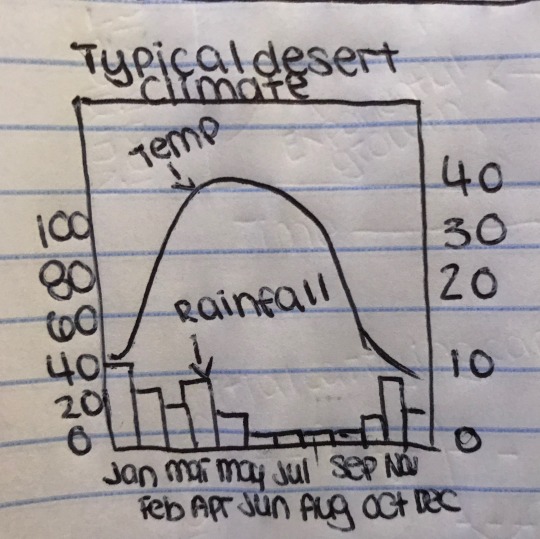
Temperate Grasslands
Cover huge areas in both the temperate and tropical parts of the world
Low total annual rainfall, with the uneven seasonal occurrence of rain, preventing forests from growing.
Bison and antelope tend to live here.
Temperate Deciduous Forest
Found in the northeast of North America, south of the taiga. Trees here drop their leaves during the winter.
More plant variety than in the taiga
Has vertical stratification of plants and animals. Some live on the ground, some live on low branches, and some live in the treetops.
Rich soil because of decomposing leaf litter.
Conifer Forest-Taiga or Boreal Forest
Found in Northern Canada, much of Europe, and Russia
Dominated by conifer forests like spruce
The landscape is dotted with lakes, ponds, and bogs.
The abundance of rain, allowing trees to grow
Very cold winters
The largest terrestrial biome
Heavy snowfall, trees have downwards pointing branches to keep snow from acumulating
More species variety than in the tundra
Large temperature range
Tundra
Located in the far north of North America, Europe, and Asia
Called the permafrost, due to its permanently frozen subsoil in the farthest point north
Called the frozen desert, little to no rainfall
Appears to have gently rolling treeless plains with lakes, ponds, and bogs
Birds migrate during the winter
Low species diversity
Chemical Cycles
Water Cycle
Water evaporates from the earth, condenses to form clouds, then rains over the oceans and the land. Some of the rainwater percolates through the soil deeply enough that it enters a river or stream and returns to the sea. A lot of water evaporating from earth transpires from plants

The Carbon Cycle
Cell respiration by animals and bacterial decomposers add carbon dioxide to the air as a waste product.
When fossil fuels are burnt, they add carbon dioxide to the air as a byproduct
Photosynthesis uses carbon dioxide from the air and produces oxygen as a waste product.
The Nitrogen Cycle
Very little nitrogen enters ecosystems directly from the air. Most comes as a result of bacteria.
Nitrogen-fixing bacteria live in the nodules of legumes and convert free Nitrogen (N2) into the ammonium ion (NH4+)
Nitrifying bacteria convert the ammonium ion (NH4+) into nitrites (NO2-) and then into nitrites (NO3-)
Denitrifying bacteria convert nitrates (NO3-) into free atmospheric nitrogen (N2)
Decomposers break down dead organic matter into ammonia (NH4+)

Humans and the Biosphere
As humanity has grown in size, we have begun to cause massive amounts of damage to the ecosystem. We deforest millions of acres of land, destroy wetlands, cause groundwater contamination and depletion, eliminate habitats, and have caused the extinction of countless species.
Eutrophication of Lakes
Eutrophication is caused by runoff from sewage and manure from pastures. These products increase the nutrients in the water, causing excessive growth of algae and other disruptive plants. Shallow areas become choked by the excess growth of weeds. This kills the photosynthetic organisms of the lake to die, reducing the depth of the lake and detrivores deplete oxygen in the lake as they break down the dead organisms. This vicious cycle continues until life in the lake has gone extinct.
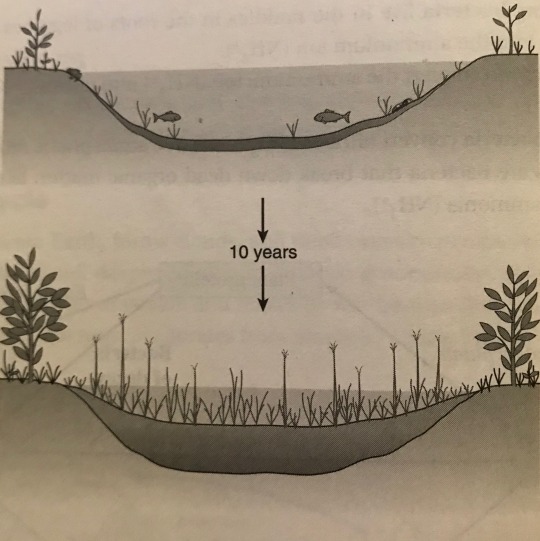
Acid Rain
Acid rain is caused by pollutants in the air from fossil fuel combustion. Nitrogen and sulfur pollutants mix to create nitric, nitrous, and sulfuric acids which drops the pH of rain to around 5.6.
Toxins
Toxins from industry farming enter the food chain. Antibiotics found in beef and chicken have been found to have nasty effects on the people who eat them, as some may be carcinogens or teratogens.
Global Warming
Burning fossil fuels has released large amounts of CO2 into the air. This causes the greenhouse effect, where the excess carbon dioxide in the air absorbs the infrared radiation reflecting off of the earth, raising the average temperature. If the earth’s temperature were to increase by 1 degree, the polar ice caps would melt, causing mass flooding, massive weather fluctuations, and an increase in tropical storms.
Depleting the Ozone Layer
Our use of chlorofluorocarbons, which are chemicals used as refrigerants and in aerosol has created a hole in the ozone layer, allowing more UV radiation to enter the atmosphere, increasing the rate of skin cancer worldwide.
Introduction of Invasive Species
There are many cases where humans accidentally bring nonnative species to new environments. Because of their lack of predators, these species outcompete the native species, leading to massive consequences. For example, the African Honeybee was brought to Brazil in 1956, and have been making their way through the Americas. These bees managed to kill 10 people by 2000.
Pesticides v. Biological Control
Farmers use pesticides to keep pesticides from eating and ruining their crops. These chemicals increase food production, however, they may also be exposing humans to nasty carcinogens. It also causes the development of resistant strains of pests. Along with that, they travel up the trophic levels and may cause harm to species who are essential to their environment.
Biological control may be a safer alternative to pesticides. Some of these methods are crop rotation, introducing natural enemies of the pest, natural plant toxins instead of synthetic ones, and insect birth control.
#ecology#ecological science#ecology studyblr#studyblr#biology studyblr#biology#sat biology#sat subject tests#global warming#climate change#acid rain#ozone layer#invasive species#population#nitrogen cycle#water cyctle#carbon cycle
17 notes
·
View notes
Text
Competencia con otras especies y división de recursos
En la competencia interespecífica, dos especies usan el mismo recurso limitado. La competencia tiene un efecto negativo en ambas especies (interacción).
El nicho de una especie básicamente es su función ecológica, la cual se define por el conjunto de condiciones, recursos e interacciones que necesita (o de los que puede hacer uso). El principio de exclusión competitiva dice que dos especies no pueden coexistir si ocupan exactamente el mismo nicho (si compiten por recursos idénticos). Dos especies cuyos nichos se superponen pueden evolucionar por selección natural para tener nichos más diferentes, lo que resulta en una partición de recursos. Los seres humanos compiten entre ellos todo el tiempo: por empleos, premios deportivos, citas, lo que sea. Pero, ¿competimos con otras especies? Si has ido de campamento alguna vez y un mapache, oso o algún otro animal ha robado tu comida, entonces tienes cierta idea de lo que es la competencia interespecífica: la competencia entre miembros de diferentes especies que usan recursos limitados superpuestos.
https://www.google.com/search?q=competencia+entre+especies&source=lnms&tbm=isch&sa=X&ved=0ahUKEwi8j6HRwY_lAhVvmK0KHYQRC90Q_AUIEigB&biw=1024&bih=625#imgdii=8Fv0s_4IC7TwVM:&imgrc=nk0zIidvBOeP5M:

A menudo los recursos en un hábitat son limitados y muchas especies compiten para obtenerlos. Por ejemplo, las plantas de un jardín compiten entre ellas por los nutrientes del suelo, el agua y la luz del sol. El efecto global de la competencia interespecífica es negativo para las especies que participan en ella (es una interacción). Esto es, a cada especie le iría mejor si la otra no estuviera presente.En este artículo veremos el concepto de nicho ecológico y cómo el que las especies tengan nichos semejantes conduce a la competencia. También veremos cómo las especies pueden evolucionar por selección natural para ocupar nichos con más diferencias, lo que reparte los recursos y minimiza la competencia.Cada especie encaja en una comunidad ecológica a su manera y tiene sus propios rangos de tolerancia para diversos factores ambientales. Por ejemplo, el nicho de una especie de pez puede estar definido parcialmente por los rangos de salinidad (cantidad de sal), pH (acidez) y temperatura que puede tolerar, así como por los tipos de alimento que puede comer.Como veremos, dos organismos con exactamente el mismo nicho no pueden sobrevivir en el mismo hábitat (porque compiten por exactamente los mismos recursos, de forma que uno acabará por extinguir al otro). Sin embargo, las especies cuyos nichos solo se superponen parcialmente pueden coexistir. También pueden evolucionar durante largos periodos de tiempo para hacer uso de otros recursos diferentes que se superpongan menos.
El principio de exclusión competitiva nos dice que dos especies no pueden tener exactamente el mismo nicho en un hábitat y coexistir de manera estable. Esto es porque las especies con nichos idénticos tienen las mismas necesidades, lo que significa que competirían exactamente por los mismos recursos.
Un ejemplo famoso del principio de exclusión competitiva se muestra en la imagen siguiente, que muestra dos tipos de microorganismos unicelulares, Paramecium aurelia y Paramecium caudatum. Cuando se les cultiva de manera individual en un laboratorio, ambas especies prosperan. Pero cuando se cultivan en el mismo tubo de ensayo (hábitat) con una cantidad fija de nutrientes, el crecimiento de ambos es pobre y finalmente P. aurelia supera a P. caudatum en la competencia por alimento, lo que provoca la extinción de este último.
Partición de recursos
La exclusión competitiva puede evitarse si una o las dos especies en competencia evolucionan para usar un recurso diferente, ocupar un área distinta del hábitat o alimentarse a otra hora del día. El resultado de este tipo de evolución es que dos especies similares usan recursos que no se superponen y por lo tanto tienen nichos distintos. Esto se llama partición de recursos y ayuda a que las especies coexistan porque hay una menor competencia directa entre ellas.
Las lagartijas Anolis que se encuentran en Puerto Rico son un buen ejemplo de partición de recursos. En este grupo, la selección natural ha llevado a la evolución de especies distintas que usan recursos diferentes. La imagen siguiente muestra la partición de recursos entre 111111 especies de lagartijas Anolis. Cada especie vive en su propio hábitat preferido, definido por el tipo y la altura de la vegetación (árboles, arbustos, cactus, etcétera), la cantidad de luz solar y la humedad, entre otros factores.
https://www.google.com/search?q=competencia+entre+especies&source=lnms&tbm=isch&sa=X&ved=0ahUKEwi8j6HRwY_lAhVvmK0KHYQRC90Q_AUIEigB&biw=1024&bih=625#imgrc=s0fCUJfbgkllhM:
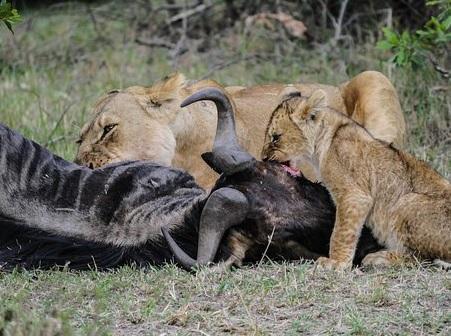
1 note
·
View note
Note
Stop procrastinating c:
I did hehe. I woke up today and first thing I did was fungi revision, I finished chemistry test and now I am about to kick Paramecium caudatum's cytopyge.thanks!
3 notes
·
View notes
Text
Amoeba hunts and kills paramecia by phagocytosis
#nature#photography#science#education#adorable#explore#funny#Paramecium Caudatum#protozoa#cell#unicellular#nucleus#organelles#vacuoles#animal cell#gif#gifs#biology#awesome#beautiful#beauty#amoeba#phagocytose
16 notes
·
View notes
Text
Electromagnetic fields induce oxidative stress in aquatic organisms, suggesting a possible negative effect of transmission lines.
PMID: Int J Radiat Biol. 2017 08 ;93(8):818-830. Epub 2017 May 25. PMID: 28452248 Abstract Title: Response of aquatic protists to electric field exposure. Abstract: PURPOSE: To test the effects of short-term exposure of aquatic organisms to electric field (EF) with negligible magnetic component.MATERIALS AND METHODS: We built a plate capacitor that served as a source of EF of strengths that can be found in nature near transmission lines. We exposed two cultured protist species Euglena viridis and Paramecium caudatum to EFs for 24 hours and monitored their abundance, morphology, intracellular superoxide anion (by dihydroethidium [DHE]), hydrogen peroxide by (HDCF) and lipid peroxidation (MDA) contents, catalase (CAT) and superoxide dismutase (SOD) activity.RESULTS: We found that even short-term exposure to low strength EF causes changes in population abundance, morphology and oxidative stress response in both species. As the EF strength increased, abundance of both species decreased. However, at weaker EFs, fission rates were seemingly promoted. We noted a decrease in size in both organisms in directions perpendicular to their fission planes correlated with EF strength. DHE and HDCF fluorescence intensity and SOD activity were higher in organisms exposed to the stronger EFs.CONCLUSIONS: We suggest that the electric component of the field, rather than the magnetic, is the main cause of all the noted effects. As a result, aquatic organisms should be given greater importance in studies assessing the effects of EMFs in spite of the attenuating effects of water to EF strengths.
read more
0 notes
Link
paramecium Caudatum: Habitat' Structure and Locomotion Artical by jagjit gupta In this article we will discuss about Paramecium Caudatum:- 1. Habit, Habitat and Culture of Paramecium Caudatum 2. Structure of Paramecium Caudatum 3. Locomotion 4. Nutrition 5. Respiration and Excretion 6. Osmoregulation 7. Behaviour 8. Reproduction 9. Aberrant Behaviour in Reproduction 10. Some Cytoplasmic Particles. Contents: Habit,
0 notes
Text
Protozoários
"
Protozoário é um termo popular para indicar organismos predominantemente unicelulares, cuja origem é grega, onde proto significa primeiro e zoo, animal. Acredita-se que as primeiras observações destes organismos foram feitas por Antonie van Leeuwenhoek entre o século XVII e XVIII.
Discussões sobre o sistema de classificação biológica para estes organismos começou ao final do século XVIII, época marcada pela teoria evolucionista de Charles Darwin. O termo Protozoa, mencionado por Sir George Goldfuss (1817) inseriam algumas classes de invertebrados à época conhecidos como Lithozoa, Phytozoa e Medusinae. Em 1845, Karl von Siebold reformulou o termo e restringiu o uso para organismos unicelulares, com núcleo e vacúolo, que a época eram mencionados como flagellata, ciliata, sporozoa e rhizopoda. Em 1860, Richard Owen publicou o livro Paleontology onde elevou Protozoa para reino e considerou o mesmo conceito proposto por von Siebold para reunir os organismos neste grupo. Em 1866, o naturalista alemão, Ernest Haeckel foi responsável pela proposição do reino Protista, pois até então dois reinos, Animalia e Plantae eram considerados. Em 1938, o biólogo norte americano Copeland propõe dois reinos: Monera para acomodar os organismos procariontes, como algas azuis (hoje as cianobactérias) e as bactérias, proposta esta rejeitada à época pela comunidade científica. Para o reino Protoctista inseriu organismos eucariontes e unicelulares; além de algas e fungos que eram colocados em subgrupos e cuja constituição corpórea era considerada simples e pouco diferenciada. Em 1969 surge uma nova proposta de classificação biológica para os organismos. O ecólogo norte americano Robert Harding Whittaker propõe o reino Fungi e considera Animalia, Plantae, Monera (único reino com seres procariontes, as bactérias) e Protista, este último incluiu organismos unicelulares eucariontes e as algas, que possui uma diversidade de formas, contemplando desde seres unicelulares até aqueles multicelulares, com talos formando verdadeiras florestas aquáticas.
//<![CDATA[ googletag.cmd.push(function() { googletag.display('dfp-arroba-meio1'); }); //]]>
Ao final do século XX, Lynn Margulis, bióloga norte americana, propôs uma das teorias que contribuiu sobremaneira com a história evolutiva dos organismos, a “teoria da endossimbiose”. Com relação à classificação biológica, Margulis aceita os reinos propostos por Whittaker, mas subdivide Monera em Archaea e Bacteria. Além disso, resgata a nomenclatura utilizada por Copeland, o reino Protoctista para inserir os organismos unicelulares eucariontes e as algas. Concomitantemente a Margulis, Carl Richard Woese, microbiologista norte americano ao estudar principalmente dados ultraestruturais da célula e dados da região nuclear de RNA ribossômico, propõe três domínios (categoria taxonômica acima de reino) para acomodar os organismos (figura 1); Eukarya, para todos os seres eucariontes, unicelulares e pluricelulares como as algas, protozoários diversos, plantas, fungos e animais; Bacteria, para organismos procariontes que Woese considerou como verdadeiras bactérias (eubacteria), nesta categoria estão as cianobactérias, antigas algas azuis; e Archaea, com microrganismos procariontes terrestres ou aquáticos, que se diferenciam das eubacterias bioquímica e geneticamente. Muitos dos organismos em Archaea vivem em ambientes extremos onde outros organismos não sobreviveriam como em locais com altas temperaturas, ou sem oxigênio, ou ainda, em locais com grande quantidade de sais (salinas).
Figura 1. Classificação dos três domínios proposta por Carl Richard Woese.
Para tanto, os organismos antigamente inseridos no reino Protista (ou Protoctista) encontram-se espalhados em grandes grupos (para saber mais consulte: http://tolweb.org/tree/). Contudo, alguns grupos são mais estudados e abordados como protistas, que se subdividem em diferentes grupos, como as euglenófitas (euglenoides), criptófitas (criptomônadas), haptófitas, dinoflagelados, diatomáceas (classe: Bacillariophyceae), algas douradas (classe: Chrysophyceae), algas verde-amarelas (classe: Xanthophyceae), algas pardas, algas vermelhas e algas verdes. Estes organismos podem ser estritamente fotossintetizantes, como podem ser mixotróficos, ou seja, utilizar dois modos para nutrição, sendo autótrofos e heterótrofos. Existem os protistas heterotróficos, há muito estudados como fungos ou organismos relacionados a estes e são reconhecidos como, oomicetos, mixomicetos (ou organismos plasmodiais) e dictiostelídeos (ou organismos pseudoplasmodiais).
//<![CDATA[ googletag.cmd.push(function() { googletag.display('dfp-arroba-meio2'); }); //]]>
Contudo, o termo protozoário se restringiu a organismos também reconhecidos como protistas, mas estudados por zoólogos, parasitologistas, microbiologistas, entre outros. Estes organismos são reconhecidos em vários grupos (para saber mais: http://tolweb.org/Eukaryotes/3) e reconhecidos há tempos como amebas, flagelados, ciliados, esporozoários (ou apicomplexos), entre outros.
Amebas
Amebas (figuras 2 e 3) são organismos unicelulares que chamam atenção pelo modo de locomoção, feito através de pseudópodes, ou seja, projeções da célula que se deforma para que a movimentação aconteça. O citoplasma das amebas se diferencia em ectoplasma e endoplasma e há uma película (visível em microscopia eletrônica) semelhante à membrana plasmática. O vacúolo pulsátil (o mesmo que contráctil) é uma organela visível, pois é bastante utilizada como osmorreguladora, sendo responsável pela sobrevivência destes organismos em meio aquático. No entanto, para nutrição formam-se fagossomos, quando há união entre o vacúolo alimentar (meio alcalino) e o lisossomo (meio ácido); o hábito alimentar é mencionado como fagocitose. Comumente, a reprodução é assexuada e ocorre por divisão binária, mecanismo semelhante à divisão mitótica. Apesar de a maioria ser de vida livre, existem espécies causadoras de doenças e o principal registro são para amebíase causada por Entamoeba histolytica.
Figura 2: Foto de microscopia de uma ameba da espécie Amoeba proteus. Foto: Lebendkulturen.de / Shutterstock.com
Figura 3: desenho esquemático de uma ameba. Ilustração: Aldona Griskeviciene / Shutterstock.com
Flagelados
Como característica principal possuem flagelos, que podem ser únicos, aos pares ou em muitos números. Estruturalmente, estes flagelos se assemelham aos microtúbulos de outros organismos eucariontes (9 + 2) e tem como função principal a rápida locomoção destes organismos no ambiente. Os flagelos também são importantes com relação ao modo de nutrição, uma vez que capturam presas para posterior absorção e também auxiliam no processo de reprodução assexuada, conhecida como fissão binária longitudinal. Este tipo de reprodução ocorre ao longo de um plano longitudinal e através de mitoses sucessivas seguidas por fissão (separação) resultando em dois indivíduos. Pouco se conhece sobre a reprodução sexuada em flagelados. Muitos representantes são parasitas, como espécies em Trypanosoma (figura 4). No Brasil, Trypanosoma cruzi é o responsável por causar a doença de Chagas.
Figura 4: Trypanosoma cruzi. Foto: Dr. Mae Melvin / CDC [public domain]
Ciliados
Os ciliados (figuras 5 e 6) são considerados um dos organismos mais complexos entre os seres unicelulares e eucariontes. O nome dado ao grupo indica a presença de inúmeros cílios em algum estágio da vida destes organismos. Os cílios são responsáveis pela locomoção, bem mais rápida que em amebas e flagelados e também auxiliam no processo de nutrição. A disposição dos cílios é em fileira de modo longitudinal e cobrindo o corpo do ciliado, como em Paramecium sp., organismo bem registrado e de vida livre (figura 5); os cílios também podem se posicionar em espiral ou em tufos. Como em outros protozoários, os ciliados possuem vacúolos contráteis para auxiliar no mecanismo de osmorregulação; o tipo de alimentação é por fagocitose, geralmente se alimentam de bactérias e outros protozoários, ou partículas do ambiente. A reprodução assexuada é por fissão binária e o tipo de reprodução sexuado é bem complexo e foi mais bem registrado em Paramecium sp. Conjugação é o nome dado a este tipo de reprodução e envolve o micronúcleo (2n), responsável pela divisão meiótica e consequente troca de material genético; em um certo momento, há desintegração do macronúcleo e depois dos micronúcleos; após a formação do núcleo zigótico já diferenciado, ocorre a separação dos organismos, mitoses sucessivas e divisão binária que resultará em vários indivíduos geneticamente distintos.
Figura 5: Paramecium caudatum, um protozoário ciliado. Foto: Lebendkulturen.de / Shutterstock.com
Figura 6: Vorticella sp. um protozoário ciliado. Foto: Rattiya Thongdumhyu / Shutterstock.com
Esporozoários ou Apicomplexos
O gênero melhor conhecido para este grupo é o parasita humano, Plasmodium sp. (figura 7) causador da malária. Diferente dos outros protozoários, os apicomplexos constituem um grupo de organismos parasitas; não possuem qualquer estrutura de locomoção e formam esporos, estruturas celulares especializadas e responsáveis pelas infecções em hospedeiros. Possuem ciclos de vida complexos, tanto assexuado como sexuado e dependem de hospedeiros diferentes para completarem estes ciclos. A malária pode ser causada por diferentes espécies: Plasmodium vivax, P. malariae, P. falciparum e P. ovale. O ciclo reprodutivo assexuado ocorre no hospedeiro intermediário, o homem, se instalando em hemácias, fígado ou baço; enquanto que a reprodução sexuada ocorre em fêmeas do mosquito Anopheles sp. atuando como hospedeiro definitivo.
Figura 7: Gametócitos de Plasmodium em plasma sanguíneo. Foto: Pingpoy / Shutterstock.com
Bibliografia recomendada:
https://www.britannica.com/biography/Carl-Woese (consultado em agosto de 2018)
http://simbiotica.org/reinos.htm (consultado em agosto de 2018)
https://www.nature.com/articles/493610a (consultado em agosto de 2018)
http://tolweb.org/tree/ (consultado em agosto de 2018)
http://tolweb.org/Eukaryotes/3 (consultado em agosto de 2018)
John Sap. The New Foudantions of Evolution: on The Tree of Life. Oxford University Press (consulta em Google Books, em agosto de 2018)
Stearn, W.T. 1992. Botanical Latin. History, Grammar, Syntax, Terminology abd Vocabulary. 4ª edição, Timber Press. Portland, Oregon. 546pp.
Evert, R.F. & Eichhirn, S.E. 2014. Raven/ Biologia Vegetal. 8ª edição, Guanabara Koogan, Rio de Janeiro, pp.278-316
Kirk, P.M., Cannon, P.F., Minter, D.W. & Stalpers, J.A. 2008. Dictionary of the Fungi. 10ª edição, CAB International, Wallingford.
Wallace, R.A., Sanders, G.P. & Ferl, R.J. 1991. Biology – The Science of Life. 3ª edição, Harper Collins Publishers Inc, New York, NY. 1246pp.
The post Protozoários appeared first on InfoEscola.
InfoEscola https://ift.tt/2NiAAf8
Publicado primeiro em https://www.infoescola.com"
Este conteúdo apareceu primeiro em: https://ift.tt/2w0BWWY
0 notes
